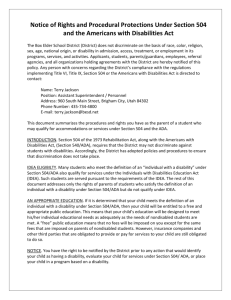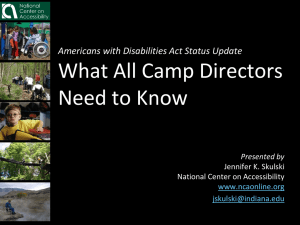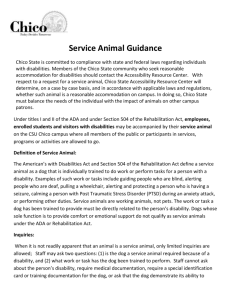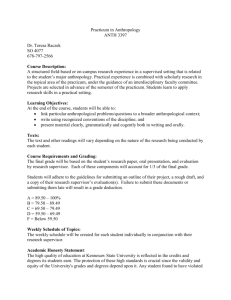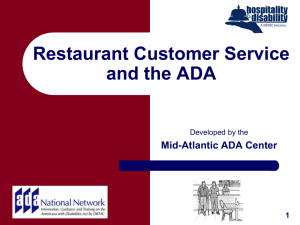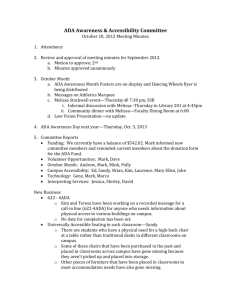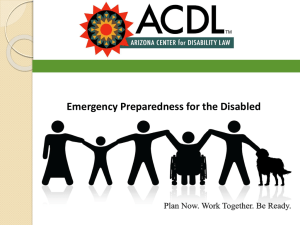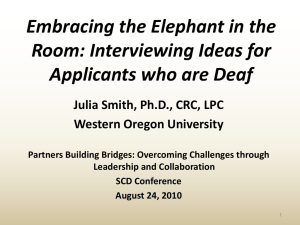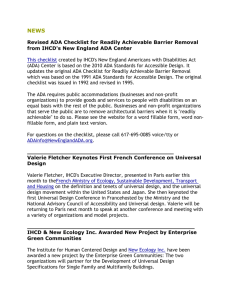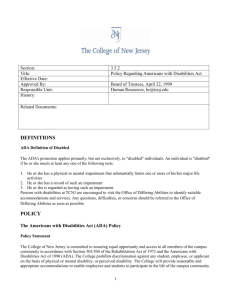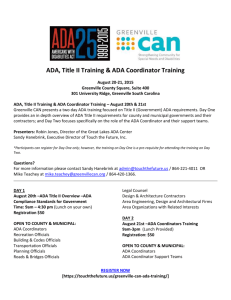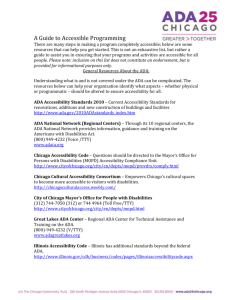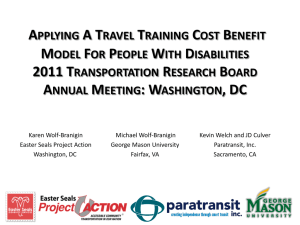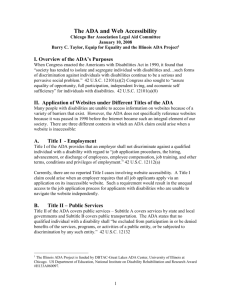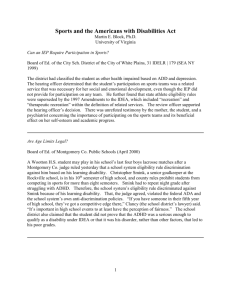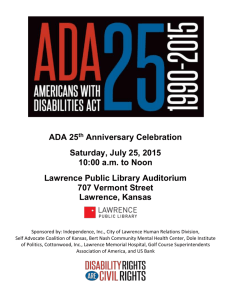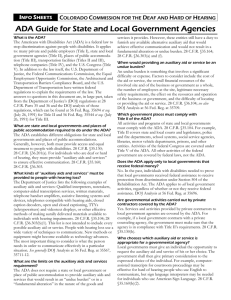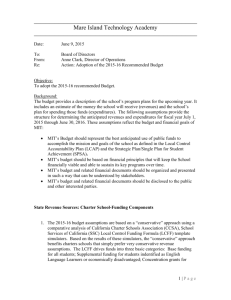Programmatic Access Training for the SF Municipal
advertisement
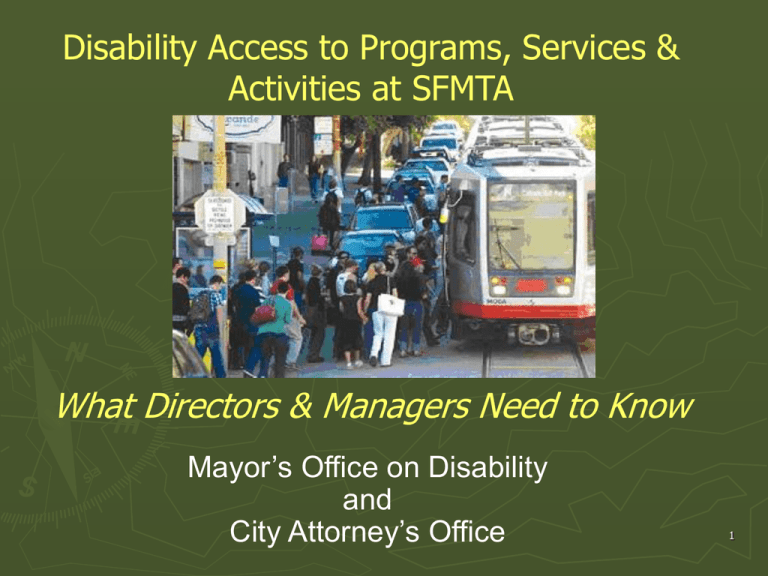
Disability Access to Programs, Services & Activities at SFMTA What Directors & Managers Need to Know Mayor’s Office on Disability and City Attorney’s Office 1 The Americans with Disabilities Act of 1990 A federal civil rights law that protects the rights of people with disabilities in employment, access to City / State programs and services, public accommodations and communication. Basic Principles Don’t Deny Participation or Service Don’t Segregate Don’t Retaliate or Coerce 2 Examples Denial of Service or Participation: A Deaf customer requests a sign language interpreter at a hearing for her parking ticket dispute but is told that this process can be done via mail in her case. Segregation : The Better Streets Plan projects conducts a community meeting in an inaccessible site with the reasoning that people with disabilities can participate in a specific meeting to discuss accessibility concerns Retaliation or Coercion: A bus driver who was confronted by a wheelchair user at an ADA hearing, avoids boarding this individual on subsequent trips. 3 Affirmative Obligations of the ADA ► Physical Accessibility & Maintenance of Accessible Features ► Reasonable Modifications to policies, practices and procedures ► Effective Communication Physical Access … We Know It Means: ADA Standards for Accessible Design They define the physical world of accessibility for individuals with mobility, hearing or sight disabilities in a variety of indoor and outdoor environments (recreational, pedestrian). Examples: 1. On-street parking and loading zones 2. Crosswalks & signal timing (Accessible Pedestrian Signals) 3. Accessible routes and public sidewalks, street furniture 4. Bus stops, boarding platforms, transit vehicles, vending machines 5. Offices, meeting rooms, customer service centers, public restrooms , elevators ► Remember! There are design implications and trade-off for various user groups… 5 But Did You Know… Maintenance of Accessible Features? ► It is a violation of the ADA if public entities routinely fail to maintain in working order equipment and features that are required to provide ready & equal access to individuals with disabilities. Examples: 1. File cabinets, chairs or other obstructions left in hallways or on the strike side of a door 2. Locked public accessible restrooms during normal business hours 3. Poorly maintained station elevators & vehicle lifts that are unreliable 4. Inoperable APS & turned off bus digital voice announcements 5. Street furniture that is broken and in the path of travel 6. Construction projects without an alternate circulation route 7 Affirmative Obligations of the ADA ► Reasonable Modification We have the obligation to modify our policies, practices and procedures when needed to provide equal access. Examples: 1. Allowing customers with disabilities to have a seat while waiting in line at a customer service center. 2. Allowing customers w/ disabilities to attend a parking ticket hearing by telephone if they are unable to physically come into the office. 3. Adopting a priority boarding policy for seniors and wheelchair users on MUNI buses. 8 Affirmative Obligations Under the ADA ► Effective Communication The City must provide people with disabilities the same opportunity as others to enjoy, receive and understand information from the City. When the City provides an auxiliary aid or service to ensure effective communication, the City must give primary consideration to the aid or service the individual with a disability has requested. 9 Effective Communication is Required in.. ► ► ► Customer transactions & meetings Public events / community meetings Information dissemination For Deaf / HOH Customers For Blind / Low Vision Customers Sign Language Interpreters (ASL) (ESL) Large Print (sans serif font size 18+) Video Remote Interpreting (VRI) Tactile Maps Real Time - Brochures, maps, schedules Captioning / & other print materials Assistive Listening - Websites & other online Devices (ALD) information - Signage , electronic boards & information kiosks Open & Closed Captions for videos Accessible electronic docs & screen reading software Audio descriptions Finally…Are your Public Meetings Accessible? Your Public Event Notice Must Include: ► ► ► ► ► Accessibility features at the meeting site ( always choose an accessible site for meetings) Availability of auxiliary aids and services (BOS resolution requires captioning for a meeting w/100+ people & ASL for a meeting of 500+ people) Contact person to request reasonable modifications Time frame for requests Public transit routes to the site (optional) * Any video produced w/ City funds must include captioning 11 Do your Contractors comply with the ADA? ► A government agency does not limit or lessen it’s ADA responsibility by hiring a contractor to provide a program or service to the public. We are responsible! ► A government agency must ensure that its contractors provide programs, services or activities in an accessible manner both architecturally and programmatically. We must ensure contractors’ compliance through contracts & permitting 12 Next Steps for Full Disability Access… ► Provide notice to your customers about disability access features & policies ► Implement division specific “ADA liaisons” who can ensure accessibility in daily operations ► Become familiar w/ available resources Citywide & develop policies in advance to handle disability related requests ► Empower your staff w/ information, continuous training and the authority to do the “right thing” ► Know & Implement the Citywide ADA Grievance Procedure 13 The Mayor’s Office on Disability is Here to Help ! For a number of ADA Resources please visit our website: www.sfgov.org/mod ► Citywide ADA Grievance Procedure: ► Accessible Public Events Checklist: ► Accessible Public Meeting Locations: ► Resources for Programmatic & Communication Access: http://www.sfgov2.org/index.aspx?page=496 http://www.sfgov2.org/index.aspx?page=416 http://www.sfgov2.org/index.aspx?page=398 http://www.sfgov2.org/index.aspx?page=501 14


